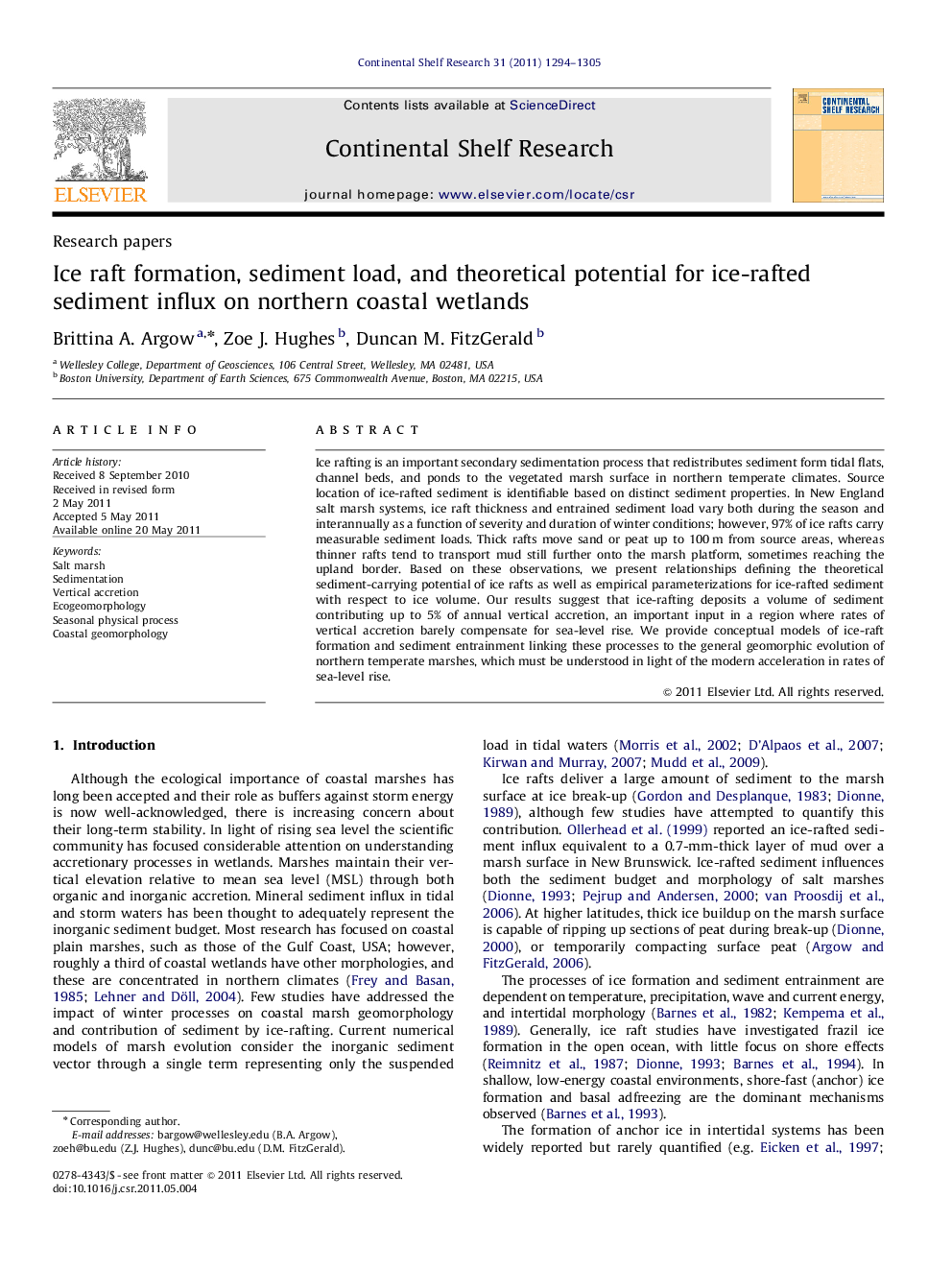| Article ID | Journal | Published Year | Pages | File Type |
|---|---|---|---|---|
| 4532590 | Continental Shelf Research | 2011 | 12 Pages |
Ice rafting is an important secondary sedimentation process that redistributes sediment form tidal flats, channel beds, and ponds to the vegetated marsh surface in northern temperate climates. Source location of ice-rafted sediment is identifiable based on distinct sediment properties. In New England salt marsh systems, ice raft thickness and entrained sediment load vary both during the season and interannually as a function of severity and duration of winter conditions; however, 97% of ice rafts carry measurable sediment loads. Thick rafts move sand or peat up to 100 m from source areas, whereas thinner rafts tend to transport mud still further onto the marsh platform, sometimes reaching the upland border. Based on these observations, we present relationships defining the theoretical sediment-carrying potential of ice rafts as well as empirical parameterizations for ice-rafted sediment with respect to ice volume. Our results suggest that ice-rafting deposits a volume of sediment contributing up to 5% of annual vertical accretion, an important input in a region where rates of vertical accretion barely compensate for sea-level rise. We provide conceptual models of ice-raft formation and sediment entrainment linking these processes to the general geomorphic evolution of northern temperate marshes, which must be understood in light of the modern acceleration in rates of sea-level rise.
►In northern back barrier and estuarine systems ice rafting augments wetland vertical accretion. ► Ice rafting is a secondary sedimentation process from subtidal to supratidal environments. ► Ice-rafting causes persistent geomorphic change in northern temperate salt marshes. ► Climate change causing reduction of ice rafting may impact the sustainability of meadow marshes.
